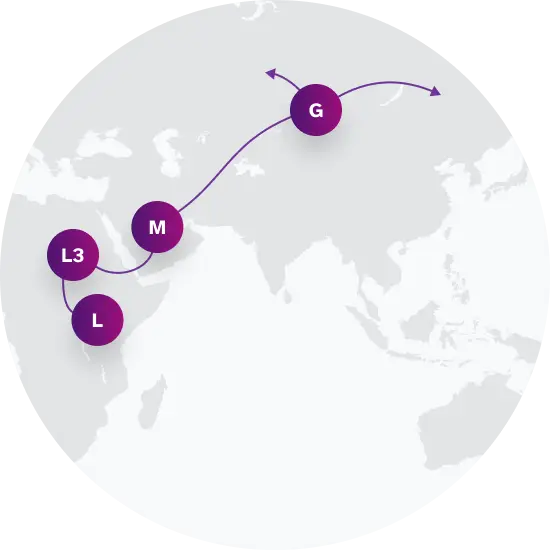Haplogroup G
What is Maternal Haplogroup G?
Haplogroup G is a genealogical group of lineages defined by unique genetic markers present in your mitochondrial DNA, which is transmitted from your mother. Your maternal haplogroup paints a picture of your ancient origins and the migrations of your ancestors. Although your maternal haplogroup reflects just one of your many ancestral lineages, it carries information about that lineage over tens of thousands of years.
Among 23andMe research participants, haplogroup G is commonly found among populations in China.
It's important to note that your haplogroup doesn't define your current ethnic identity; rather, it provides an insight into your deep ancestry on the maternal side.
 Maternal Haplogroup Origins G
Maternal Haplogroup Origins GTop Surnames with Haplogroup G
For surnames with sufficient representation in the data, these percentages represent the frequency with which each surname is found in individuals exhibiting this genetic marker.
Haplogroup G is linked to the ancient Jōmon people of Japan
When the first groups reached what is now Japan between 20,000 and 30,000 years ago, they would have walked to Hokkaido Island, which was still connected to the mainland. These settlers gave rise to the Jōmon culture approximately 15,000 years ago, which gains its name from the distinctive form of pottery that often resembled coiled rope. In addition to being distinctive, Jōmon pottery was innovative — it was the first pottery in Japan, and among the earliest anywhere in the world. The Jōmon lived by fishing, hunting, and gathering, but with the rich resources of the Japanese archipelago, they could also afford to be more sedentary than other hunter-gatherers at the time.These early arrivals were joined more than 2,500 years ago by a new migration of women from the north. These newcomers belonged to haplogroup G, which has been found in remains from the Hokkaido Jōmon. However, their maternal lines have not been passed down to all Japanese. The branch of G found in the Jōmon has only found in the Ainu of northern Hokkaido today.
 Northern coast of Hokkaido.
Northern coast of Hokkaido.